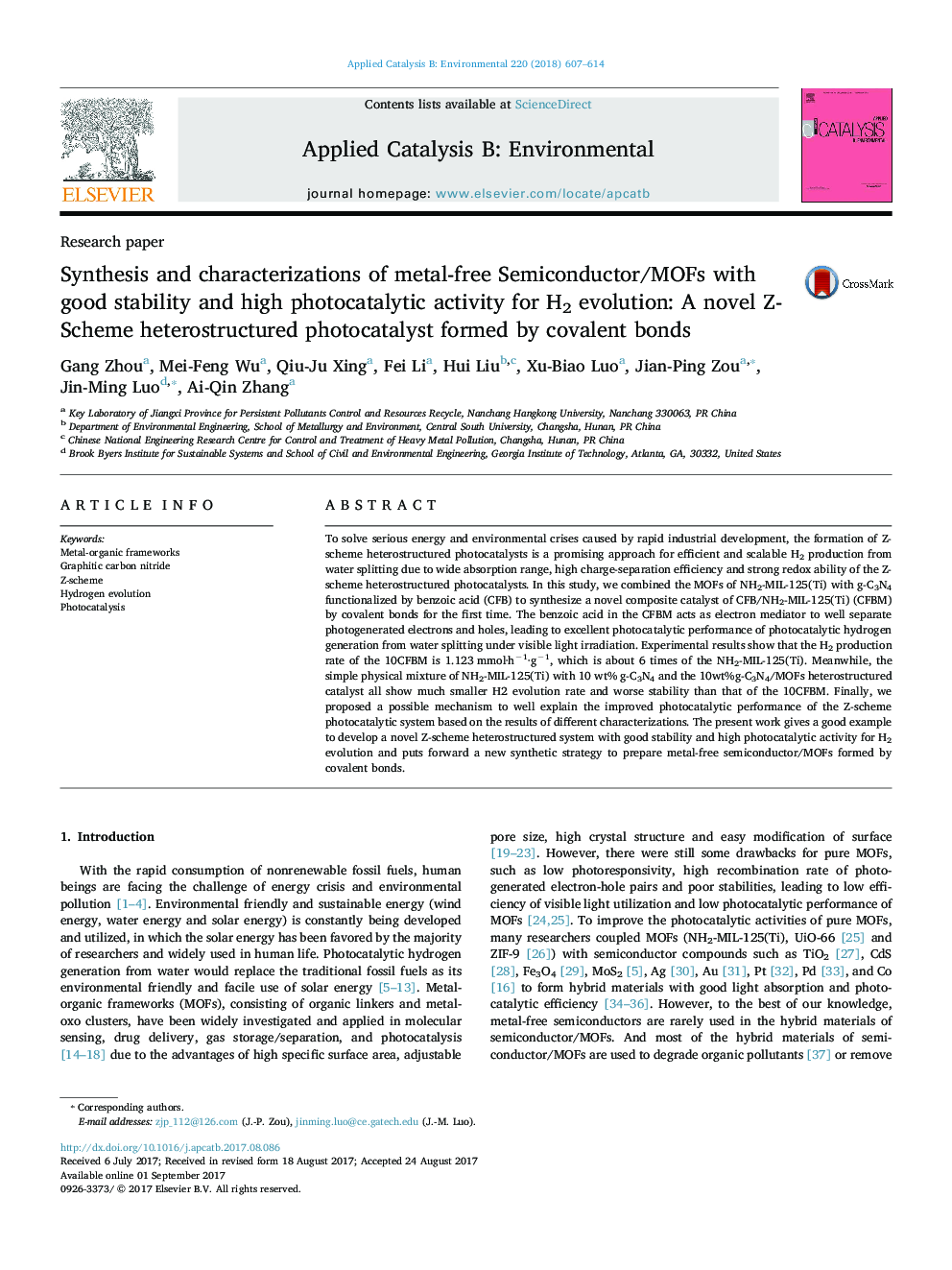| Article ID | Journal | Published Year | Pages | File Type |
|---|---|---|---|---|
| 6453676 | Applied Catalysis B: Environmental | 2018 | 8 Pages |
â¢A strategy was proposed to prepare Z-scheme catalyst of metal-free semiconductor/MOFs formed by covalent bonds.â¢The Z-scheme catalyst shows excellent photocatalytic performance for H2 evolution from water splitting.â¢The role of benzoic acid in the Z-scheme heterostructured catalyst was well investigated.â¢A mechanism was put forward to well explain the improved photocatalytic performance of the Z-scheme catalyst.
To solve serious energy and environmental crises caused by rapid industrial development, the formation of Z-scheme heterostructured photocatalysts is a promising approach for efficient and scalable H2 production from water splitting due to wide absorption range, high charge-separation efficiency and strong redox ability of the Z-scheme heterostructured photocatalysts. In this study, we combined the MOFs of NH2-MIL-125(Ti) with g-C3N4 functionalized by benzoic acid (CFB) to synthesize a novel composite catalyst of CFB/NH2-MIL-125(Ti) (CFBM) by covalent bonds for the first time. The benzoic acid in the CFBM acts as electron mediator to well separate photogenerated electrons and holes, leading to excellent photocatalytic performance of photocatalytic hydrogen generation from water splitting under visible light irradiation. Experimental results show that the H2 production rate of the 10CFBM is 1.123 mmol·hâ1·gâ1, which is about 6 times of the NH2-MIL-125(Ti). Meanwhile, the simple physical mixture of NH2-MIL-125(Ti) with 10 wt% g-C3N4 and the 10wt%g-C3N4/MOFs heterostructured catalyst all show much smaller H2 evolution rate and worse stability than that of the 10CFBM. Finally, we proposed a possible mechanism to well explain the improved photocatalytic performance of the Z-scheme photocatalytic system based on the results of different characterizations. The present work gives a good example to develop a novel Z-scheme heterostructured system with good stability and high photocatalytic activity for H2 evolution and puts forward a new synthetic strategy to prepare metal-free semiconductor/MOFs formed by covalent bonds.
Graphical abstractDownload high-res image (217KB)Download full-size image
